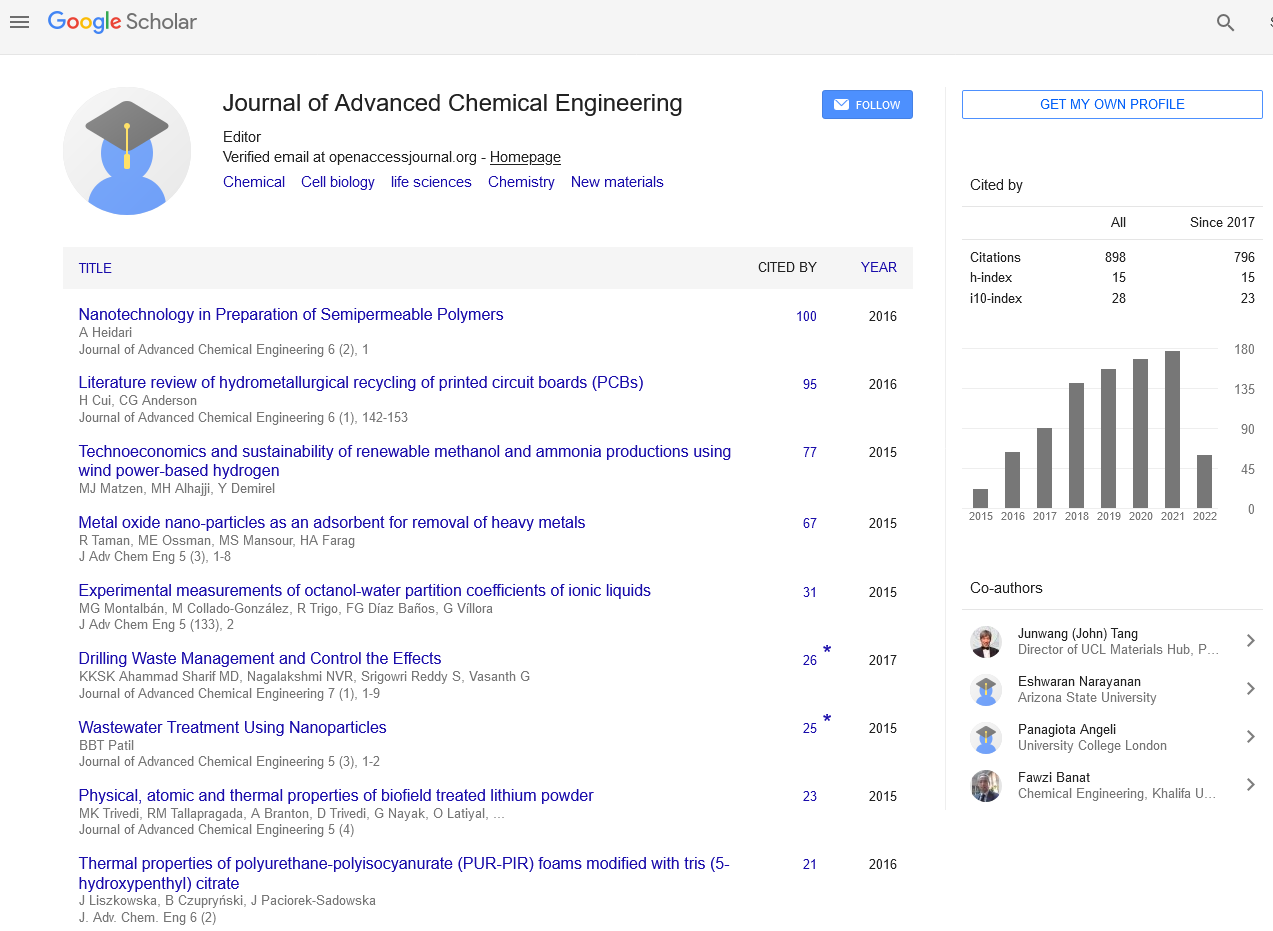Indexed In
- Open J Gate
- Genamics JournalSeek
- Smithers Rapra
- RefSeek
- Directory of Research Journal Indexing (DRJI)
- Hamdard University
- EBSCO A-Z
- OCLC- WorldCat
- Scholarsteer
- Publons
- Geneva Foundation for Medical Education and Research
- Google Scholar
Useful Links
Share This Page
Journal Flyer

Open Access Journals
- Agri and Aquaculture
- Biochemistry
- Bioinformatics & Systems Biology
- Business & Management
- Chemistry
- Clinical Sciences
- Engineering
- Food & Nutrition
- General Science
- Genetics & Molecular Biology
- Immunology & Microbiology
- Medical Sciences
- Neuroscience & Psychology
- Nursing & Health Care
- Pharmaceutical Sciences
Development of innovative epoxy biomolecules from the organic fraction of the solid urban waste
5th World Congress on Chemical Engineering and Catalysis
August 28-29, 2018 | Paris, France
Carola Esposito Corcione, Francesca Ferrari, Raffaella Striani, Paolo Visconti, Antonio Greco and Pooyan Makvandi
Univeristy of Salento, Italy
IPCB CNR, Italy
Posters & Accepted Abstracts: J Adv Chem Eng
Abstract:
The present work is focused on developing innovative active biomolecules from the organic fraction of the solid urban waste (FORSU). The main goal of the experimental activity is the reduction of the bacterial activity of the FORSU, and its conversion in high added-value products, to be used in different fields of civil and industrial engineering. In order to obtain a modification of its chemical structure, thus leading to the generation of active biomolecules, the organic waste, once milled, was exposed to UV radiation. The contemporary exposure to UV radiation and to the ozone generated by the UV was found to cause an alteration of the chemical bonds of the solid waste. Furthermore, the UV and ozone exposure ensured a strong reduction of the bacteria of the organic waste. FTIR measurements were carried out in order to verify the chemical structure of the organic waste, before and after UV exposure. In particular, a strong reduction of the carbon-carbon double and triple bond stretching peaks was found after UV irradiation, together with the appearance of the peak related to the stretching of the epoxy group. The quantitative determination of the epoxy content of the organic waste after UV exposure was calculated by chemical titration, as reported in ASTM D 1652-97. Once known the epoxy quantitative, UV-irradiated waste was mixed with different amounts of diamine. Differential scanning calorimetry (DSC) was then used to evaluate the presence of an exothermic peak due to the reaction of the epoxy groups and the amine, and to identify the reaction temperature. Finally, samples for flexural tests were produced by mixing UV-irradiated waste and diamine, and by leaving the compound in oven for the time necessary to complete the reaction.
Biography :
Carola Esposito Corcione has received her Master’s degree in Chemical Engineering at University Federico II of Naples in October 2000. She has received her PhD degree in Materials Science and Technology in May 2004, defending her thesis on “Development and kinetic characterization of new materials for stereolithography process”. From January 2005, she become an Assistant Professor at University of Salento. She keeps scientific collaborations with several Italian and international research institutions. She is the author of about 90 papers in international journals (h-index=21) and 50 presentations at international conferences, most of them are about innovative polymer based materials.
E-mail: carola.corcione@unisalento.it


